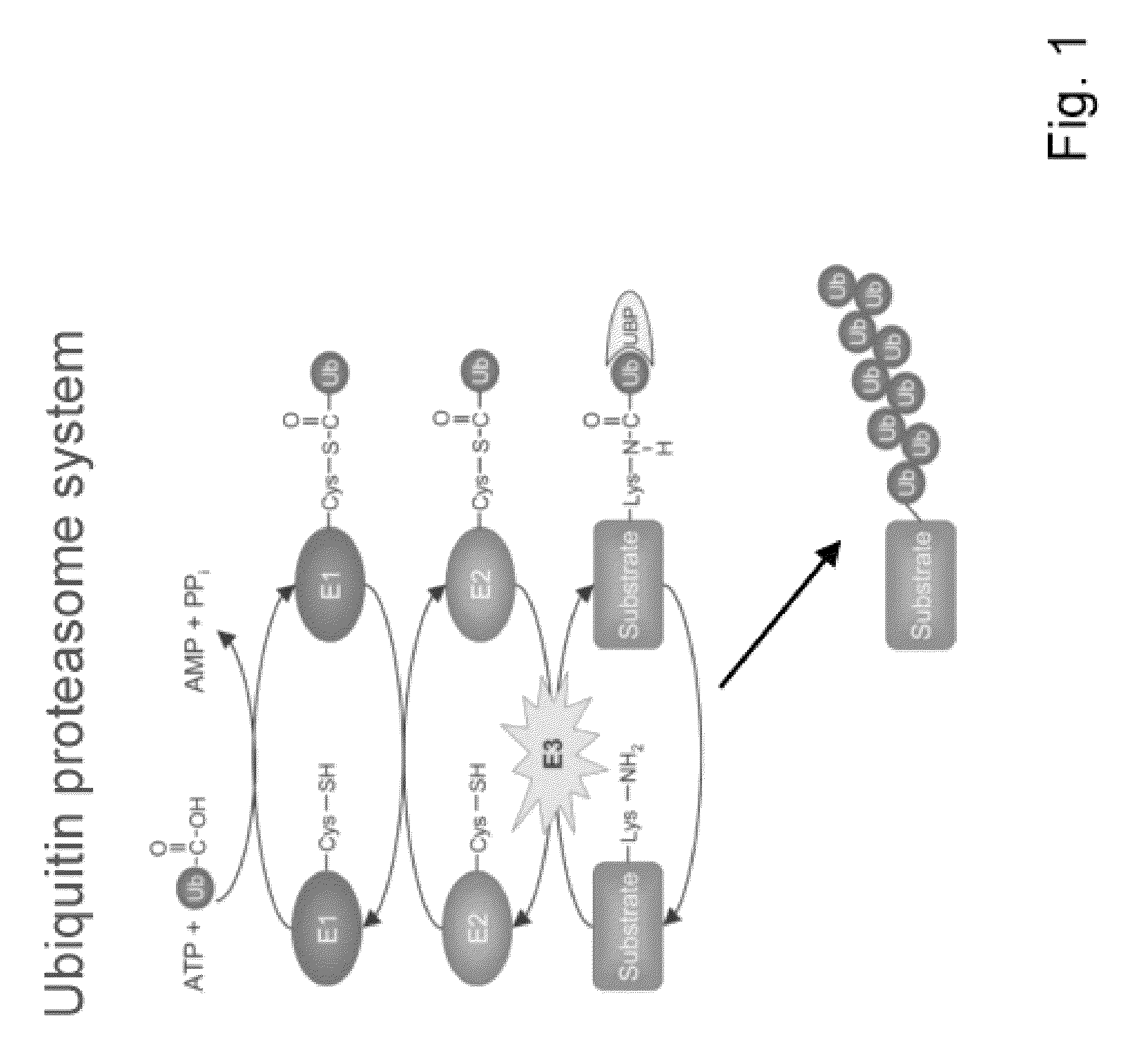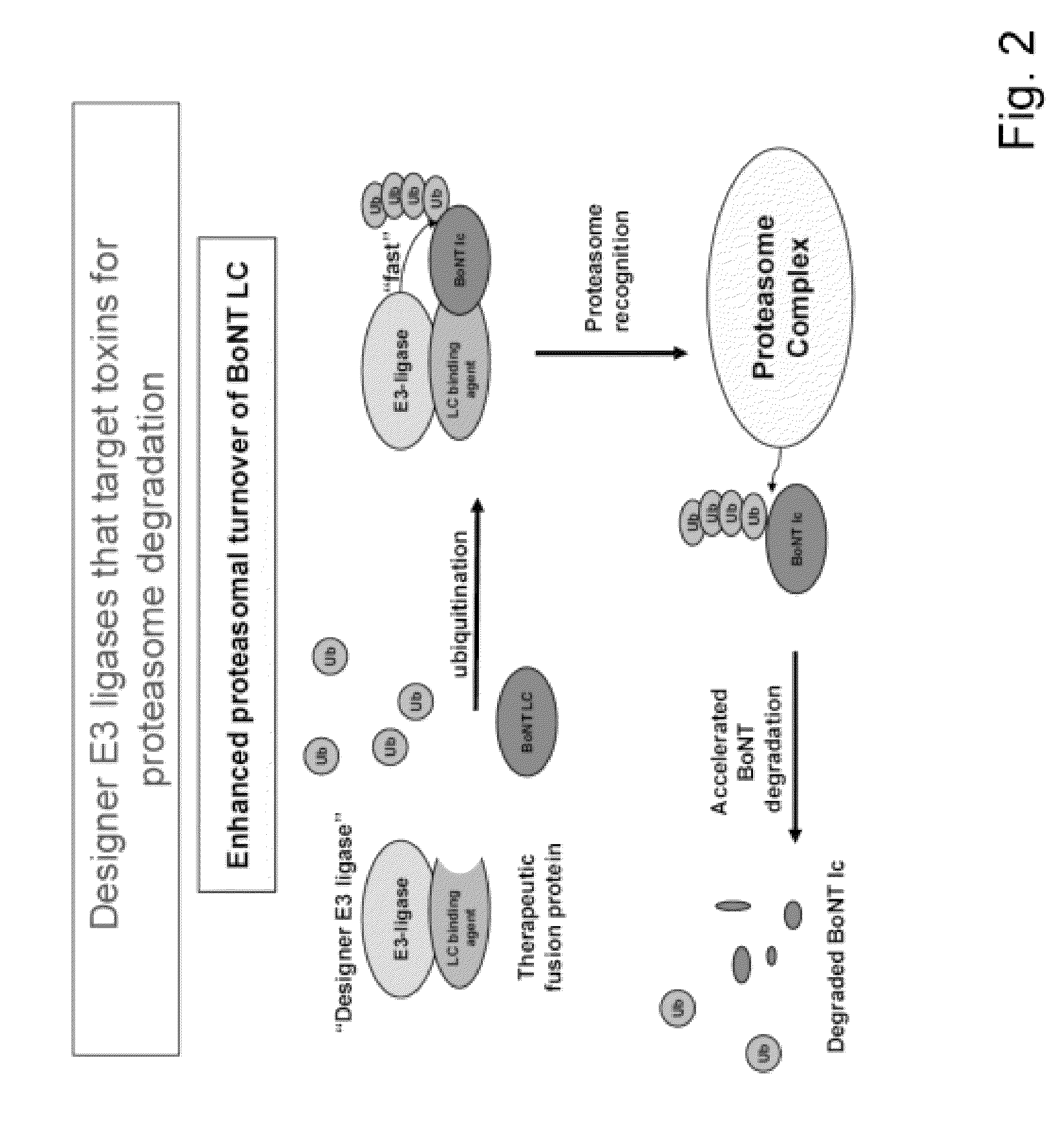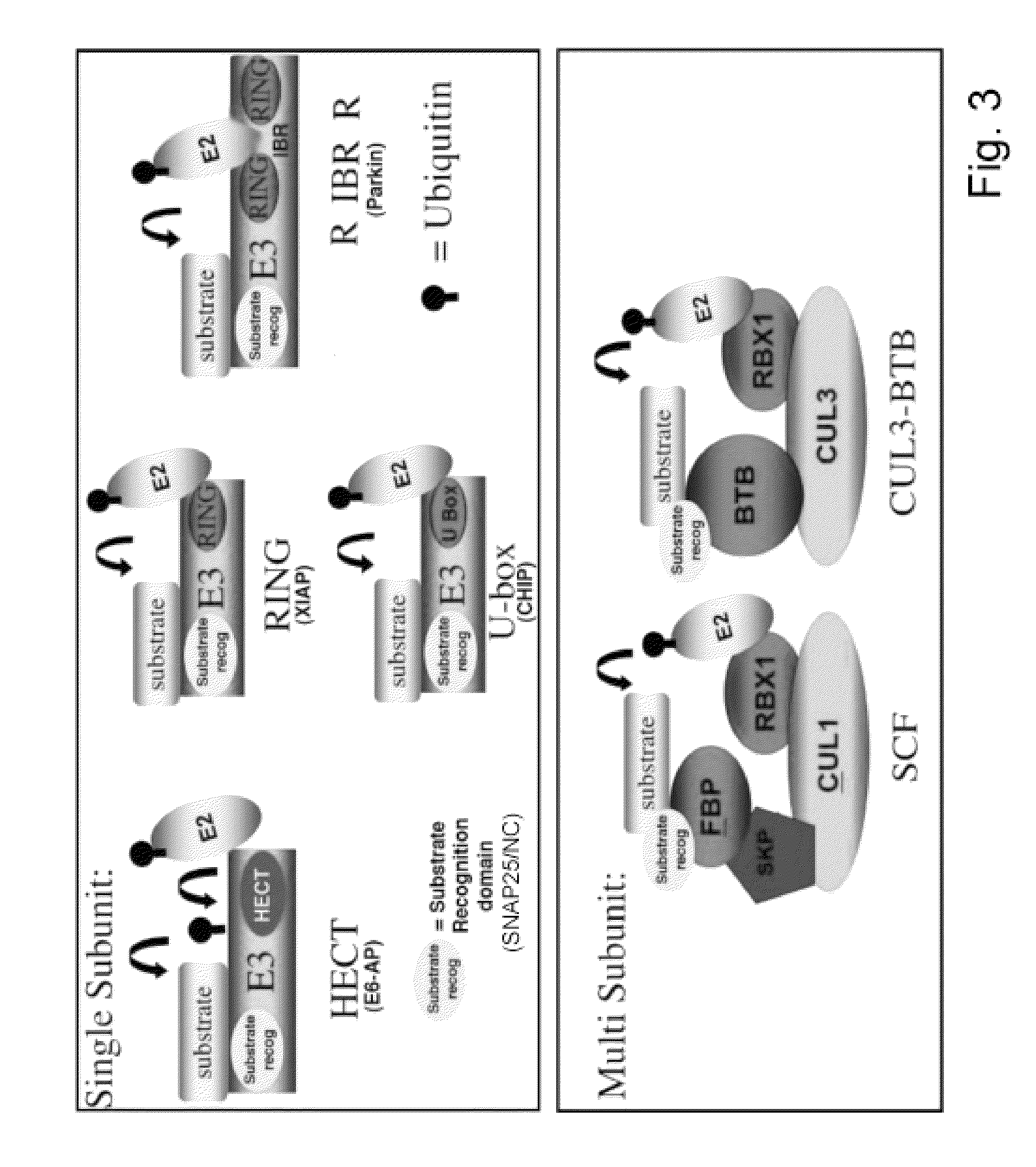Designer ubiquitin ligases having a non-cleavable SNAP25 domain and E3-ligase domain
a technology of ubiquitin ligase and design, which is applied in the field of ubiquitin ligase molecules, can solve the problems of limited treatment options for individuals after toxin infection, serious health and bioterrorism threat, and intoxication with biological toxins, so as to facilitate e2-mediated ubiquitination of toxin enzymatically active fragments, reduce nerve conduction, and facilitate e2-mediated degradation
- Summary
- Abstract
- Description
- Claims
- Application Information
AI Technical Summary
Benefits of technology
Problems solved by technology
Method used
Image
Examples
Embodiment Construction
[0023]A description of preferred embodiments of the invention follows.
[0024]The present invention relates to a recombinant ubiquitin ligase molecule, also referred to herein as a “designer ubiquitin ligase”. In one aspect, the molecule of the present invention has at least two domains: a toxin binding domain that is specific for the enzymatically active portion of a toxin, referred to herein as the “toxin active fragment”, and an E3 ligase domain that facilitates E2-mediated ubiquitination. See FIG. 1. Such a designer ligase allows the molecule to bind to the enzymatically active portion of the toxin and inhibit its action, while the E3 ligase domain allows for the ubiquitination and subsequent degradation of the toxin. In another embodiment, the composition of the present invention includes another domain, a Translocation / Cell Binding domain, which allows the molecule to bind to the cellular membrane and then be transported into the cell e.g., a delivery vehicle. Accordingly, the p...
PUM
| Property | Measurement | Unit |
|---|---|---|
| temperature | aaaaa | aaaaa |
| temperature | aaaaa | aaaaa |
| time | aaaaa | aaaaa |
Abstract
Description
Claims
Application Information
 Login to View More
Login to View More - R&D
- Intellectual Property
- Life Sciences
- Materials
- Tech Scout
- Unparalleled Data Quality
- Higher Quality Content
- 60% Fewer Hallucinations
Browse by: Latest US Patents, China's latest patents, Technical Efficacy Thesaurus, Application Domain, Technology Topic, Popular Technical Reports.
© 2025 PatSnap. All rights reserved.Legal|Privacy policy|Modern Slavery Act Transparency Statement|Sitemap|About US| Contact US: help@patsnap.com



